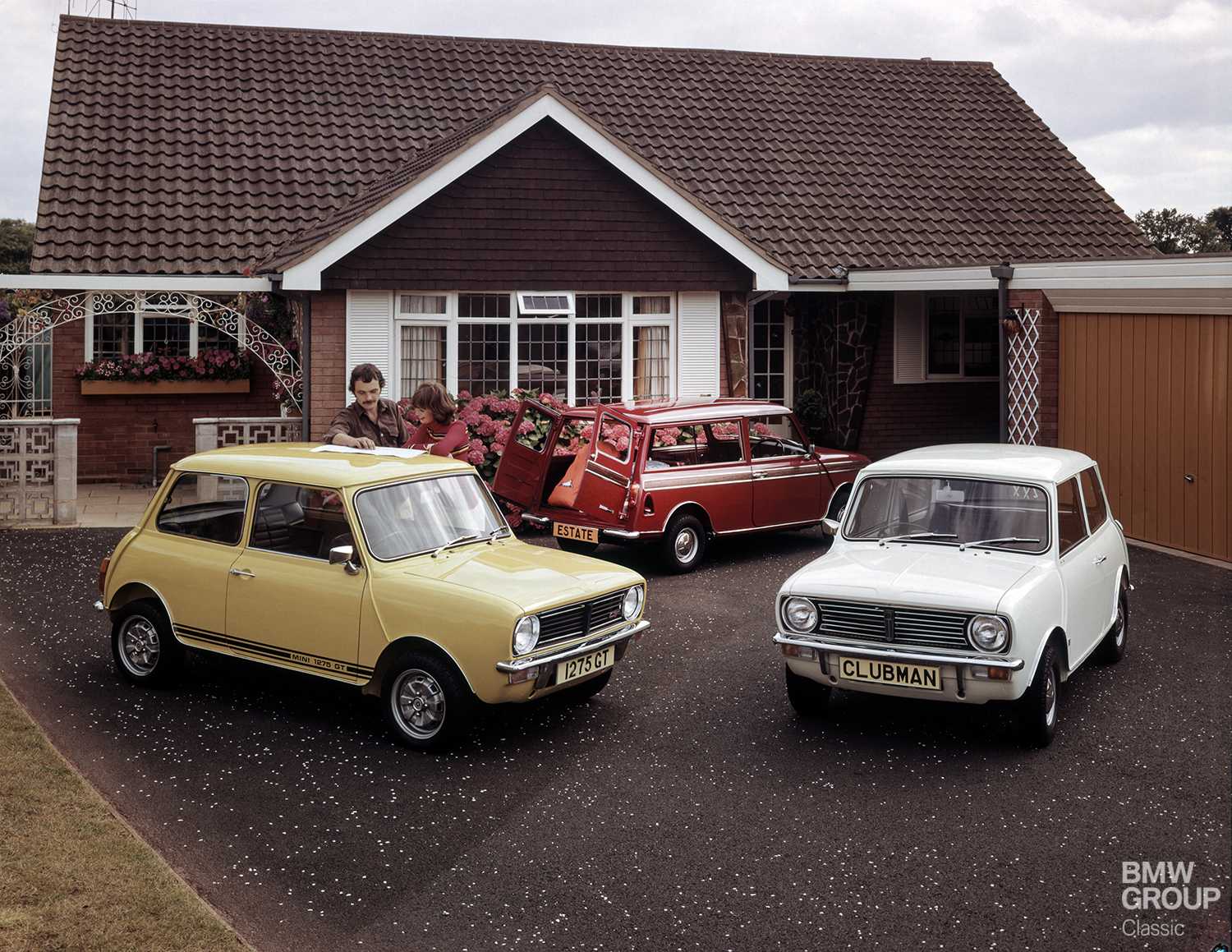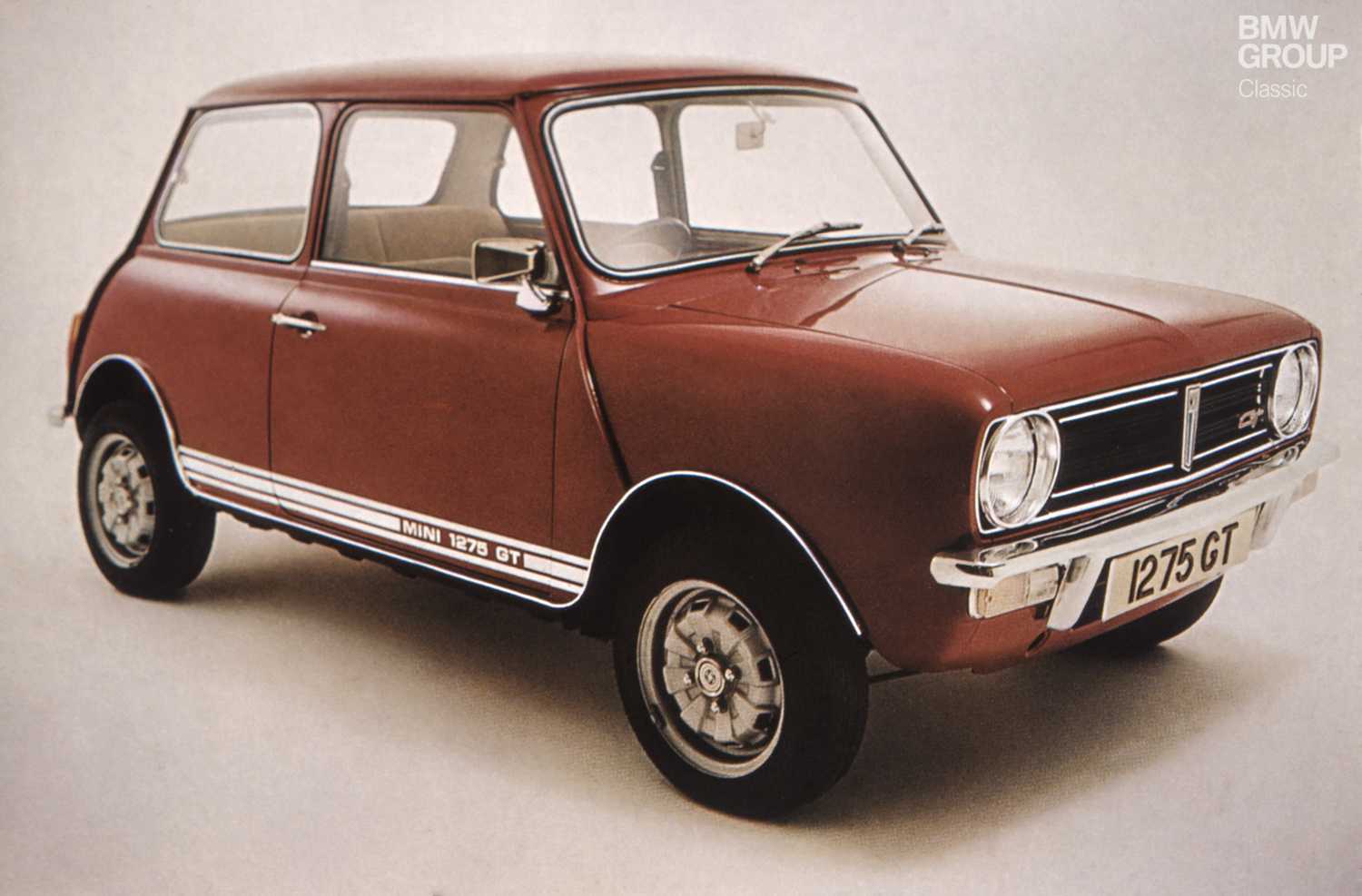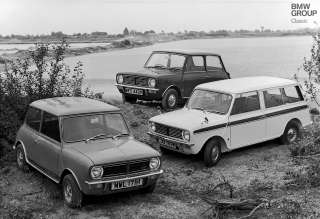In the modern MINI range, the Clubman is the estate version of the core hatch model. But when the inaugural Mini Clubman arrived on the market in 1969, it was as an alternative to the original Mini rather than an estate off-shoot. Although it was also available in a longer version (more akin to what we would call an “estate” today), the Clubman name remained purely a reference to its larger front end, shared exclusively with the 1275 GT.
The new Mini Clubman was the result of the efforts of chief stylist Roy Haynes to turn the Mini into a more up-to-date small car for the 1970s. The idea was to create a more grown-up and assured appearance by means of a heavily modified front end. The Clubman ranked above its Mini siblings in the brand’s hierarchy and was available in Saloon and Estate versions. The Mini 1275 GT was the flagship model of the Clubman range.
A new design built around proven technology.
Under its bonnet, the Clubman was fitted with the tried-and-tested 998cc four-cylinder engine delivering 39 hp, and the model came in both manual and automatic versions. Journalists from German motoring magazine auto motor und sportclocked a top speed of 122.5 km/h (76 mph) and a 0 – 100 km/h (62 mph) time of 26.5 s for the Clubman in their test for the 18/1971 issue. They heaped praise on its driving characteristics, which were deemed to offer “all the right ingredients for quick, safe driving”. In October 1975, a new engine was introduced with a capacity of 1100cc generating a respectable 45 hp.
Anyone for a little more get-up-and-go? Cue the Mini 1275 GT.
Customers seeking extra power could opt for the 1275 GT over the standard Clubman. The model’s name reflected the capacity of its engine, which put a whole 59 hp on tap and propelled the GT to 100 km/h (62 mph) in just under 14 seconds. Smart stripes down the sides and a GT badge on the radiator grille proclaimed the car’s sporty performance abilities to the outside world.
The new versions of the Mini distinguished themselves on the inside too, thanks to vastly improved equipment features and more generously upholstered seats. The instruments were now positioned in front of the driver and there were wind-up windows in the doors for the first time as well, although this meant there was no room for the handy door pockets to which many people had grown accustomed.
“Whisky and soda” suspension.
The editor of auto motor und sportMichael Mehlin was already a self-confessed Mini fan and summed up his test verdict so: “The Mini owes its considerable success to its originality and sporting image, which has been strengthened resoundingly by numerous race and rally wins.” He favoured the short-nosed version; he simply liked the design more, plus it had rubber cone suspension, which he found to be better than the hard Hydrolastic suspension sometimes nicknamed “whisky and soda” on account of the alcohol content in its hydraulic fluid.
While the Mini Clubman and Mini 1275 GT were discontinued in 1981 and the Mini Clubman Estate a year later, the classic Mini made it all the way to the turn of the millennium. Today, all three Clubman models are a rare sight and long forgotten by those around at the time (the Mini’s heritage is that much richer as a result!). Plus, they will always exist in the shadow of the original Mini, unable to compete with the sheer sweetness of the look the classic hatch could send its owner’s way.




